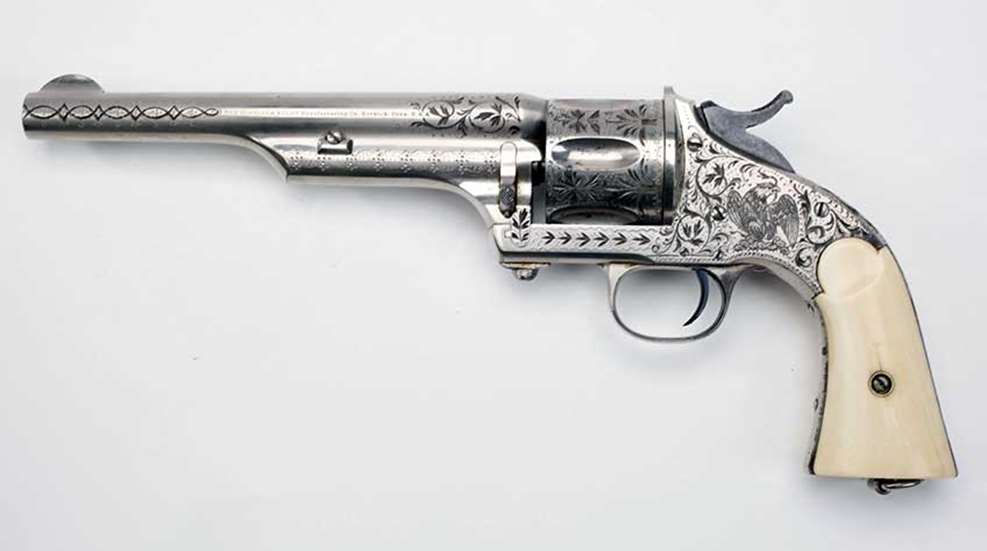
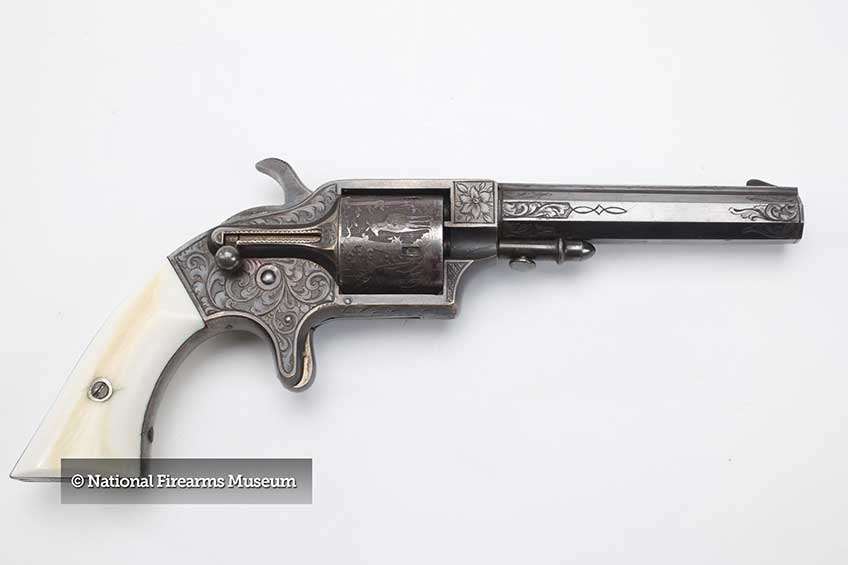
A couple of years later, Merwin got together with William and Milan Hulbert, who also owned 50-percent interest in the Hopkins & Allen Arms Company. The new company, Merwin, Hulbert & Co., expanded its business profile to include all manner of sporting goods at the time, as well as designing and importing firearms.
During its 12-year life Merwin, Hulbert & Co. produced no fewer than 14 different revolvers. The Frontier Model was a large-frame single action—and later double-action—meant to compete with the Colt Single Action Army, 1875 Remington and Smith & Wesson Model 3 revolvers.
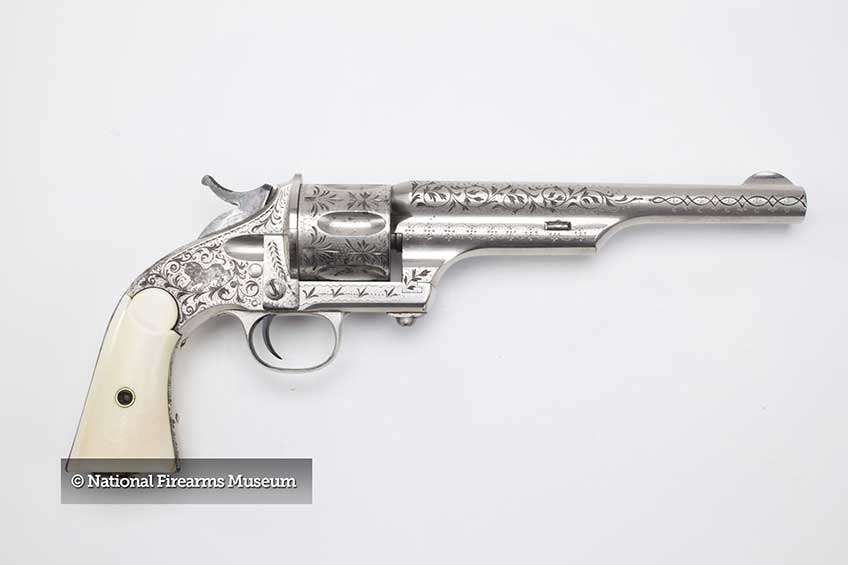
It was made in four variations. The First Model was chambered in the proprietary .44 Merwin & Hulbert, similar to Smith & Wesson’s .44 American cartridge. It was an open-top, single-action revolver that was mostly seen with a nickel finish. One distinctive feature was the “scoop”-type cylinder flutes that did not extend all the way to the front of the cylinder.
The revolver’s design—considered one of the strongest of its time—also featured a novel case extraction system whereby the barrel and cylinder were twisted and pulled forward. Empty cases were extracted by the vacuum produced during the twisting motion, and loaded cartridges remained in the cylinder due to their mass and inertia.
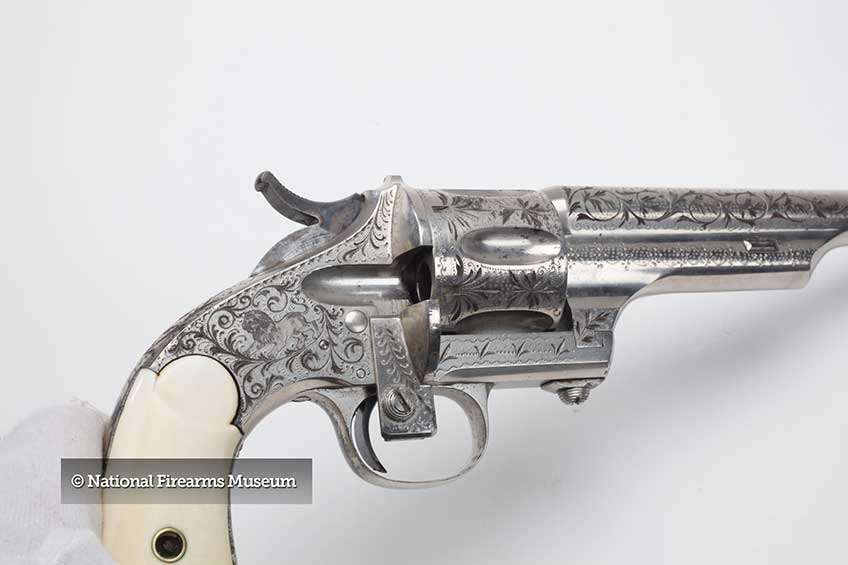
Merwin & Hulbert wanted a piece of the Russian military business and also chambered the First Model in .44 Russian. This eventually proved to be one of the company’s many less-than-stellar business decisions, as the Russians never paid for three shipments. The Frontier First Model was made for just two years.
A Second Model had a shortened cylinder locking bolt and no sideplate. The trigger guard is longer and deeper, and it was chambered in .44-40 WCF. This model ran for four years.
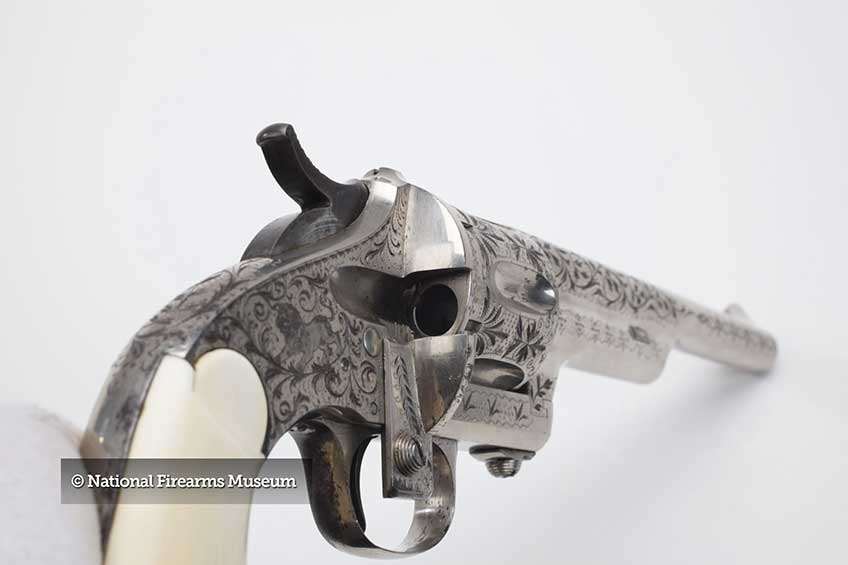
The Third Model had several significant changes, chief of which was the introduction of a top strap to give the revolver more strength and reliability. Other changes included were the elimination of the barrel wedge, extending the scoop flutes to the more popular 3/4 flutes seen on competing revolvers and the incorporation of a folding hammer spur to make the revolver easier to draw from concealment.
The Third Model was also available as a single- or double-action revolver and was made from 1883 to 1887. A Fourth Model included a barrel rib and, for the first time, two additional barrel lengths—3 1/2" and 5 1/2"—in addition to the standard 7" barrel length. The front sight became a separate component to the barrel as well. Customers could buy the additional barrels and change them without tools.

The Fourth Model enjoyed some popularity as an alternative to the Colt, Smith & Wesson and Remington revolvers. They exhibited a degree of craftsmanship coveted by many today.
Concurrent with the Frontier models was the Pocket Army models—2, 3 and 4; there was no first—basically short-barreled versions of the Frontier Model. The Pocket Army models introduced a bird’s head-style of grip with an extension of steel past the wooden grip panels. Deemed the “skill crusher,” this feature has become iconic among Merwin & Hulbert revolvers.

A smaller-frame Pocket Model was designed for a more urban clientele. It, too, went through four model variations similar to the other models, but the Pocket series was chambered in another proprietary cartridge, the .38 Merwin & Hulbert. These featured a five-shot cylinder and 3 1/2" and 5 1/2" barrels, though a few were made with a 2 3/4" barrel. An even smaller framed Pocket Model was produced with a five-shot cylinder chambered in .32 M&H.
Joseph Merwin died in 1888, and the Hulbert family changed the name of the company to Hulbert Brothers & Co. They continued to struggle as a company beleaguered by bad business decisions and eventually declared bankruptcy in 1894.

Two years later, the company was purchased by Hopkins & Allen. Production of Merwin & Hulbert revolvers sputtered along until 1916 when Hopkins & Allen went bankrupt. The remaining assets were purchased by Marlin Firearms in 1917, but the revolvers were no longer manufactured.
That wasn't the end of the road for the company, though. Interestingly, the Merwin & Hulbert company name and its patents were purchased in 2012 by a gun maker named Michael Blank, who attempted to revive the somewhat widely recognized revolver design.

Blank, who is something of a perfectionist when it comes to making replicas, was unable to produce the complicated design of the Merwin & Hulbert revolvers in a profitable manner, and the idea was abandoned by 2014.
You can see more examples of Merwin & Hubert revolvers at the NRA Museum website.





































